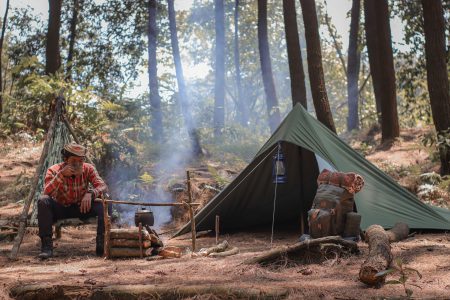If you’re craving a real adventure, there’s no better way to experience the wild heart of Australia than by going off the grid with wild camping. With rugged coastlines, remote deserts, lush rainforests, and breathtaking mountain ranges, Australia offers countless opportunities for nature lovers to explore — provided you know where (and how) to camp legally and responsibly.
In this ultimate guide, we’ll walk you through the best destinations for wild camping in Australia, what gear you’ll need, how to stay safe, and how to camp responsibly. Whether you’re a first-timer or an experienced bush camper, this guide has everything you need to prepare for your next unforgettable journey.

What is wild camping?
Wild camping, also known as bush camping, refers to camping outside of designated, developed campgrounds — typically in remote, natural areas. In Australia, it’s a popular way to connect with nature, enjoy solitude, and wake up to stunning views far from the crowds.
But it’s important to know that wild camping is not legally permitted everywhere. Rules vary significantly between states and territories, and camping in the wrong place can lead to fines or eviction.
Here’s what you need to know about the legality:
Rules differ across states and territories, and you should always check local regulations before setting up camp. Here’s a quick guide:
- National Parks: Some parks allow wild/backcountry camping in remote zones. See NSW National Parks for an example of rules.
- Private Property: It’s illegal to camp without explicit permission. Trespassing laws apply nationwide.
- Crown Land & State Forests: Some states allow dispersed camping, others require a permit. For Victoria, see Parks Victoria’s camping info.
- Roadside/Beach Camping: Often restricted or banned. Look for signs and refer to local council websites like QLD Camping Rules for updated info.
Pro Tip: Search “ [name of park/region] + wild camping rules” on official sites or call the local ranger’s office before heading out.
Why You Should Try Wild Camping in Australia:
- Unrivalled Scenery: From the red sands of the Outback to the turquoise waters of the coast, Australia’s landscapes are incredibly diverse.
- Unique Wildlife Encounters: Spot kangaroos, wombats, cockatoos, and maybe even a platypus in the wild.
- Starry Skies: With little to no light pollution, many remote campsites offer unforgettable stargazing.
- Digital Detox: Disconnect from screens and reconnect with yourself and your surroundings.
- Total Freedom: Choose your own path, wake up to different views every day, and embrace the adventure.
Top Places to Go Wild Camping in Australia:
While true wild camping is restricted in some areas, these destinations offer legal and safe options for an immersive camping experience:
- Karijini National Park, Western Australia
Explore gorges, waterfalls, and dramatic red rock formations. Remote, rugged, and ideal for seasoned campers. - Kakadu National Park, Northern Territory
A World Heritage site rich in Aboriginal culture, wildlife, and epic scenery. Designated camping areas are available. - Grampians National Park, Victoria
Perfect for hiking, rock climbing, and spotting native wildlife. Plenty of free or low-cost campsites. - Blue Mountains National Park, New South Wales
Just a few hours from Sydney, this mountainous area offers dramatic vistas and excellent hiking. - Freycinet National Park, Tasmania
Home to Wineglass Bay, this park offers beachside bush camping with unforgettable ocean views.
What to Pack for Wild Camping:
Here’s a quick checklist of essentials for your wild camping adventure in Australia:
- Tent: Lightweight, waterproof, and durable
- Sleeping bag: Choose one suited for the season and temperature
- Camping stove: Gas or fuel stove for preparing meals
- Food and snacks: Lightweight, non-perishable items
- Water: Always carry more than you think you’ll need
- First-aid kit: Include basics plus insect repellent and snake bandages
- Navigation: Offline maps, GPS, or a physical map and compass
- Clothing: Layers for hot days and cool nights, plus waterproof gear
- Trash bags: Pack out everything you bring in
Wild Camping Safety Tips:
- Know the rules: Always check whether wild camping is allowed in your chosen area.
- Tell someone your plan: Share your itinerary with a friend or family member.
- Be wildlife aware: Store food securely and never feed wild animals.
- Fire safety: Respect fire bans and use a camping stove instead of open flames.
- Weather checks: Conditions in Australia can change rapidly, especially in remote areas.
Leave No Trace: Responsible Camping
Wild camping is a privilege — treat it with respect by following Leave No Trace principles:
- Pack out all rubbish
- Camp at least 200m from water sources
- Don’t damage vegetation
- Avoid loud noises and respect other campers
- Use a trowel for human waste and bury it properly
In a Nutshell
Wild camping in Australia is an incredible way to explore the country’s natural beauty, away from the hustle and bustle of tourist hotspots. With the right preparation, gear, and mindset, you can enjoy a safe, legal, and eco-friendly adventure that you’ll remember for years to come.
So what are you waiting for? Grab your gear, pick your spot, and start exploring the wild side of Australia!
